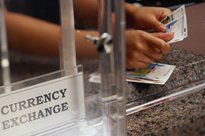
What Is a Dollar Bear?
A dollar bear is an investor who is pessimistic, or “bearish,” about the prospects of the U.S. dollar (USD). Dollar bears will typically seek to buy foreign currencies, anticipating that their value will rise relative to the declining USD. The opposite of a dollar bear is a dollar bull, who believes that the USD will strengthen.
Key Takeaways
- A dollar bear is an investor who is pessimistic about the USD.
- There are many potential reasons why an investor may be a dollar bear, one common example being the perceived threat of inflation.
- Dollar bears can seek to hedge against this risk by investing in assets that they believe would rise if the USD falls, such as certain foreign stocks and currency pairings.
Understanding Dollar Bears
In its narrow sense, the term ‘dollar bear’ refers to currency traders who believe the value of the USD will decline relative to other currencies. These traders may take a short position on the USD in a currency pair. To profit from such a trade, the exchange rate of the dollar must fall relative to the other currency chosen. However, the term can also be used more broadly to refer to investors who are bearish about the prospects of the U.S. markets and economy more generally.
There are many different reasons why someone might become a dollar bear. Some of the causes for concern that are often raised by dollar bears include the growing size of the U.S. national debt, the risk that the U.S. might default upon or ‘inflate away’ its debt obligations, the declining size of the U.S. economy as a percentage of world gross domestic product (GDP), and the Federal Reserve’s quantitative easing policies.
Investors who share these concerns might seek to position their portfolios in a way that minimizes their exposure to the USD. For the most part, dollar bears will do so by hedging their exposure to the USD, either by directly buying foreign currencies or by using derivatives to hedge their USD forex risk. They might further reduce their USD exposure by investing in foreign stocks or real estate, or by investing in commodities such as gold or silver. Another popular approach is to purchase shares in companies whose value is closely linked to commodity production, such as precious metals mining companies. For inflation-conscious investors, potential inflation hedges such as precious metals, commodities, and other non-financial assets may also be attractive.
Real-World Example of a Dollar Bear
Patrick is an American investor who is concerned that the USD will fall in value relative to other currencies. A self-described ‘dollar bear,’ he is looking for ways to reduce his exposure to the USD and position his portfolio to rise in value as the USD falls. Patrick reasons that his largest exposure to the USD comes from his USD-denominated financial assets. He owns a portfolio of American stocks and worries that he is excessively exposed to a potential decline in the USD.
In order to have less of his wealth concentrated in the USD, he begins by reallocating 25% of his stock portfolio into foreign companies’ shares, 12.5% into gold and silver mining stocks, and 12.5% into real estate investment trusts (REITs) that invest in properties outside the U.S. Patrick hopes that if the USD does depreciate, the impact on him will be offset by the expected appreciation of these foreign and inflation-resistant assets.


